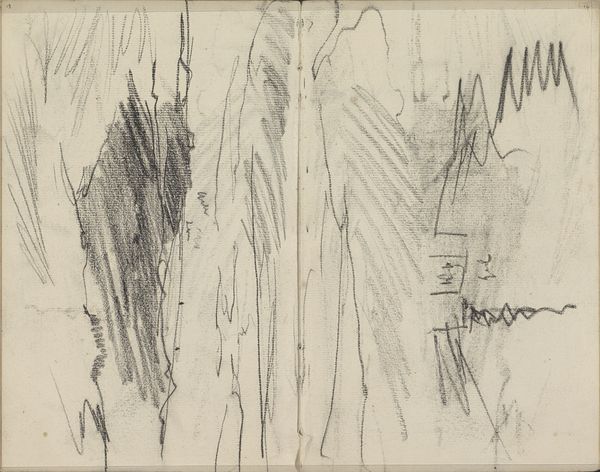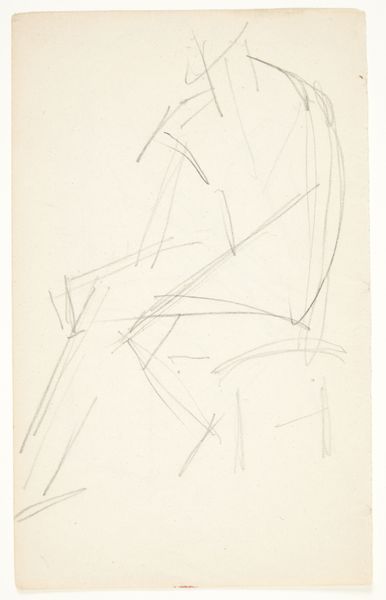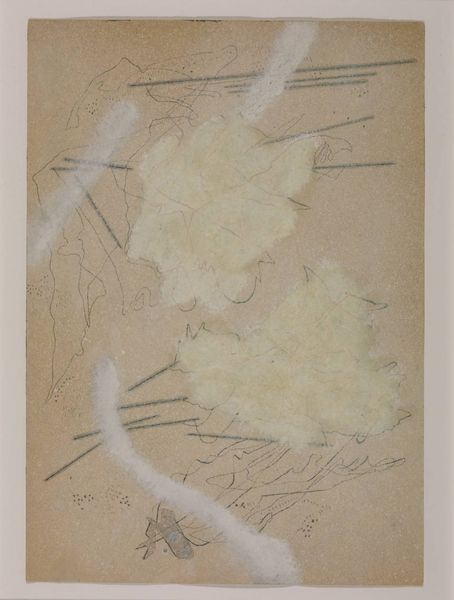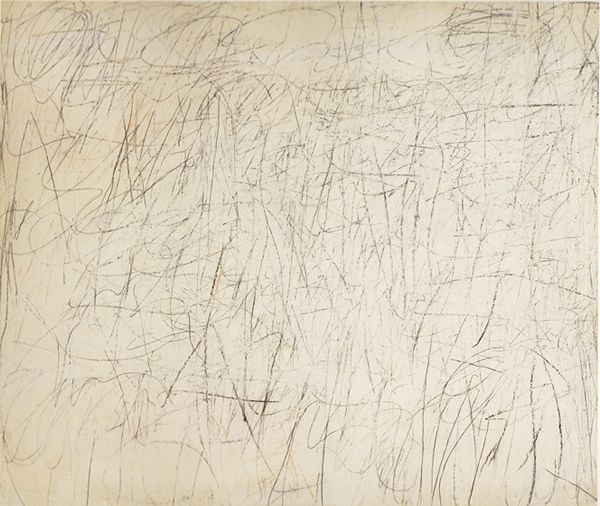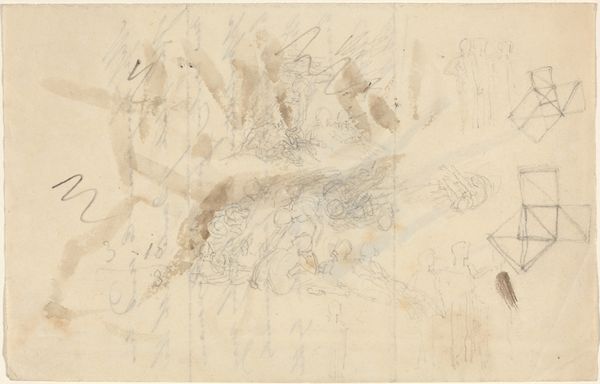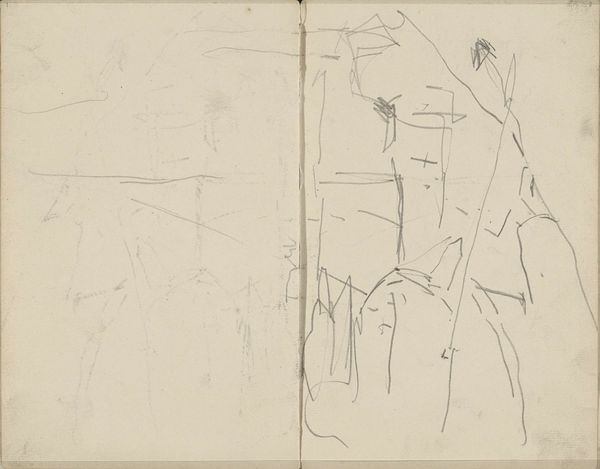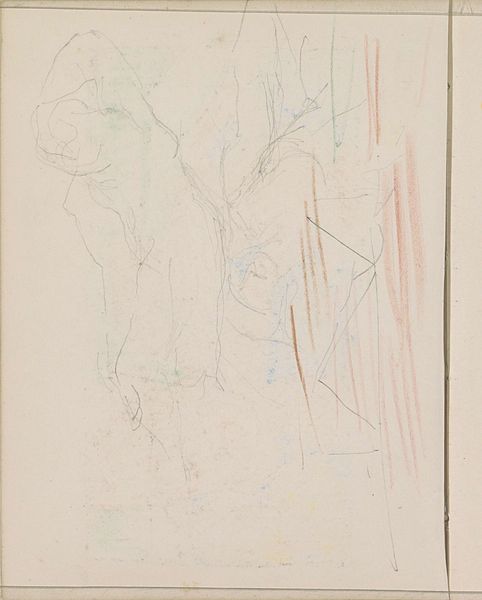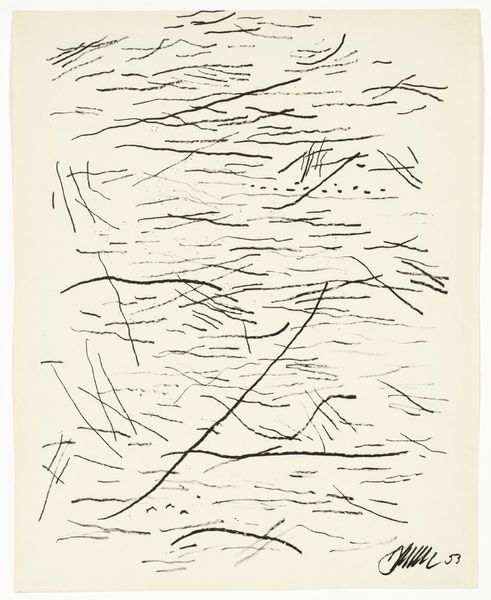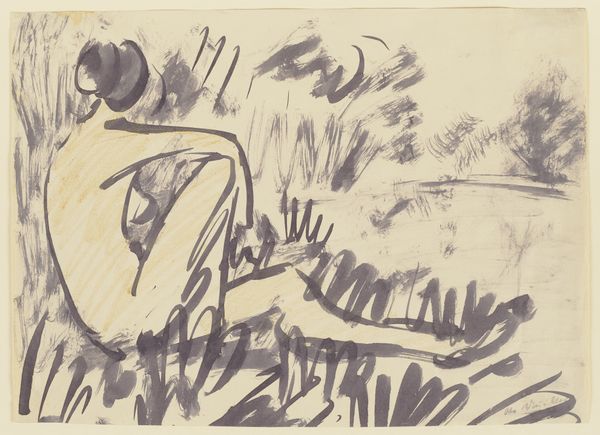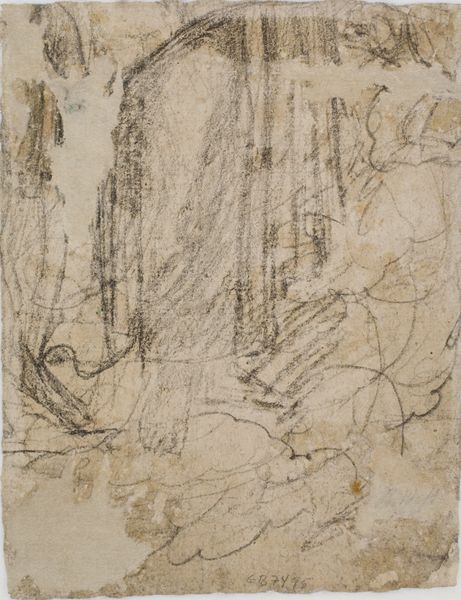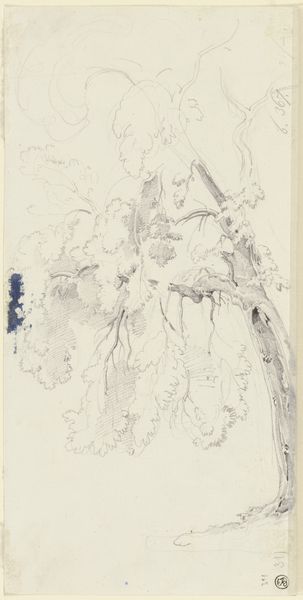
drawing, pencil
#
drawing
#
figuration
#
geometric
#
pencil
Dimensions: 186 mm (height) x 147 mm (width) (bladmaal)
Curator: This wispy sketch really draws me in. It's almost like a memory surfacing. Editor: Indeed. This is "Draft for the Painting Faun and Nymph" by Edvard Weie, created between 1940 and 1941. Curator: So, a glimpse behind the curtain! I adore seeing the initial stages. It's like catching the artist muttering ideas to themselves. What strikes you most? Editor: The implied narrative is so crucial. Considering it was drafted during the Nazi occupation of Denmark, this classical, sensual subject takes on a defiant hue. A refuge into myth. Curator: Absolutely! It's that dance between escape and quiet rebellion, isn’t it? The faun and nymph, these creatures of unchecked instinct...it's daring in its own subtle way. And that geometrical hint in the background? So interesting. Editor: The subversion relies on its accessibility, right? The very classicism makes the refusal of that ascendant Nazi ideology more profound. And Weie’s technique only enhances the complexity, don't you think? Curator: He is working in pencil, which makes the style almost provisional, like something just captured on a hike through the woods. And yet the figures feel like an eternal, hidden part of that natural landscape. The pale yellow tint in some areas makes the forest hazy. Editor: Yet, we see beyond simple bucolic imagery when understanding this as a politicized refuge. But is the ambiguity intentional? I wonder what sort of relationship is presented in the final version? Is this a playful, harmonious dynamic, or something more predatory? Curator: Ah, now you have me intrigued. I hadn't even considered that. I supposed it depended on how literally you choose to read it. Regardless of what this drawing expresses, it feels extremely moving in light of that period's circumstances. Editor: Well, there's a potent dialogue to be found when considering this drawing within its complex cultural context. A look back toward earlier painting and art aesthetics, but with a hint of defiance towards contemporary history. Curator: Agreed. It serves as a powerful, perhaps even poignant reminder that sometimes, the most potent forms of resistance are the most personal.
Comments
No comments
Be the first to comment and join the conversation on the ultimate creative platform.
